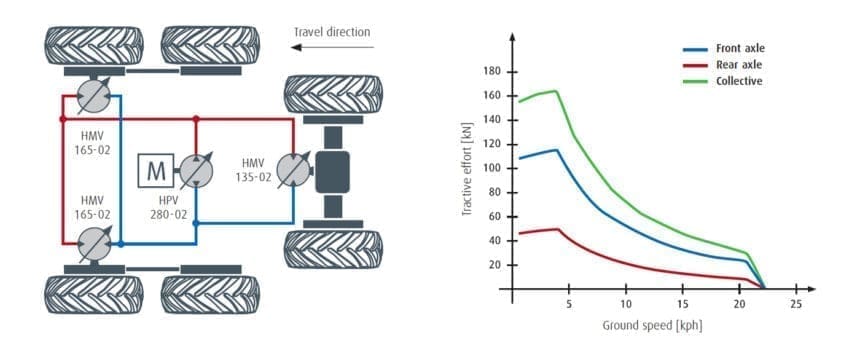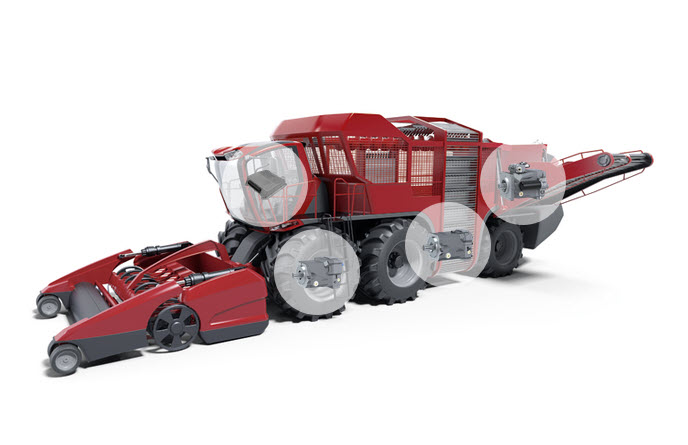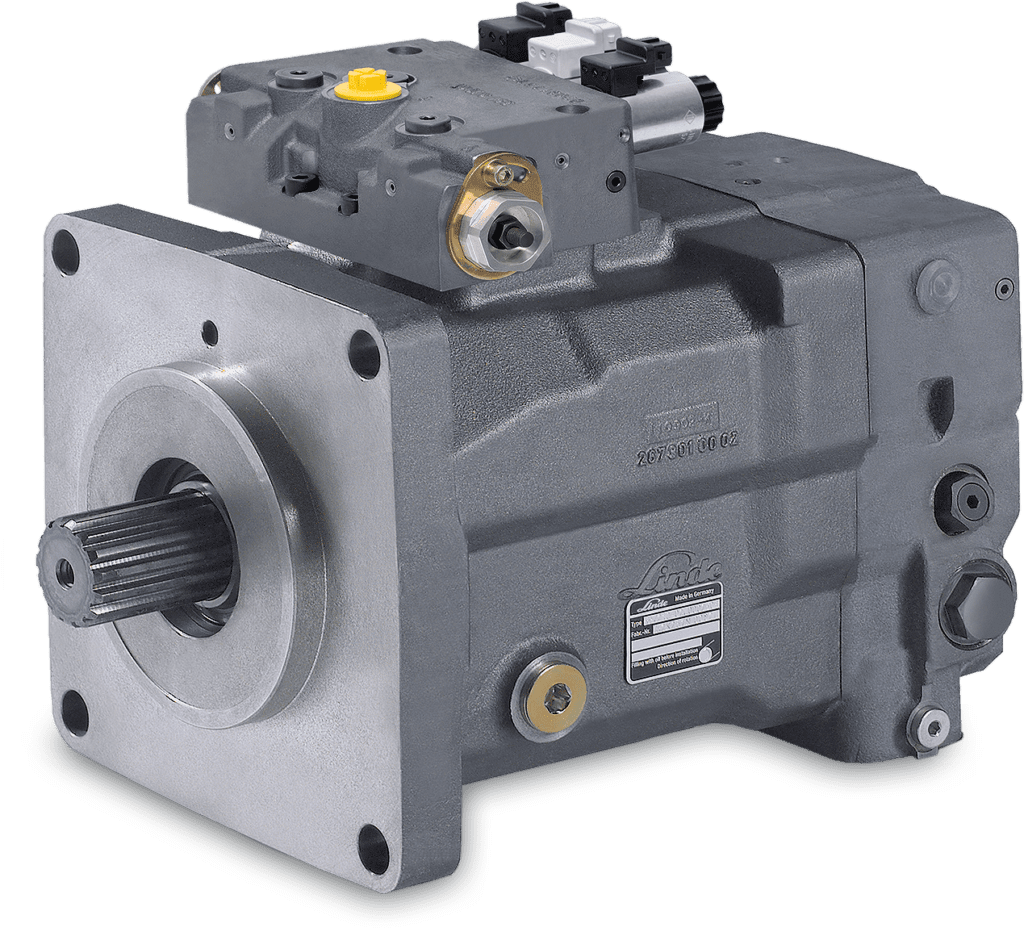250 kW - 500 kW
400 kW, 30 t, tractive effort 160 kN, ground speed 22 kph
1x HPV 280-02 E2 (propel drive)
2x HMV 165-02 (propel drive)
1x HMV 135-02 (propel drive)
1x iCon (electronic control unit)
- Low soil compaction
- Intelligent distribution of tractive effort
- With and without bunker
- Articulated joints, permanently offset axles, asymmetrical design
- Hydrostatic systems for auxiliary drives like choppers, transport belts, etc.
Beet Harvester
It’s all about high-performance harvesting. Multi-purpose harvesting machines, with and without bunkers, quickly and efficiently perform what used to be arduous manual work. For the farmer, the number of rows, the bunker volume, the harvesting and turn-round speeds are important. It’s essential at all times to ensure good harvesting quality and to avoid compacting the ground, irrespective of how quickly the machine progresses.
Machine manufacturers need hydraulic drives which enable the enormous performance of the machine and help to relieve stress on the driver. Thanks to the wide range of pumps and motors, hydrostatic systems from Linde are suitable for equipping each and every type of harvesting machine. The drive concept is optimised in each case to suit the numbers of harvesting rows, axles and wheels, and the engine power class of the machine.
The design example shows an HPV 280-02 driving three HMV- 02 variable motors in parallel. Two of these, each with 165 cc maximum displacement transmit the torque via the gearbox directly to the propulsion wheels. The third motor with 135 maximum displacement drives the twin tyres, which are offset within the travel path, via a T-axle. The motors can be controlled independently of each other. This allows tight turning circles, without any of the wheels spinning.




